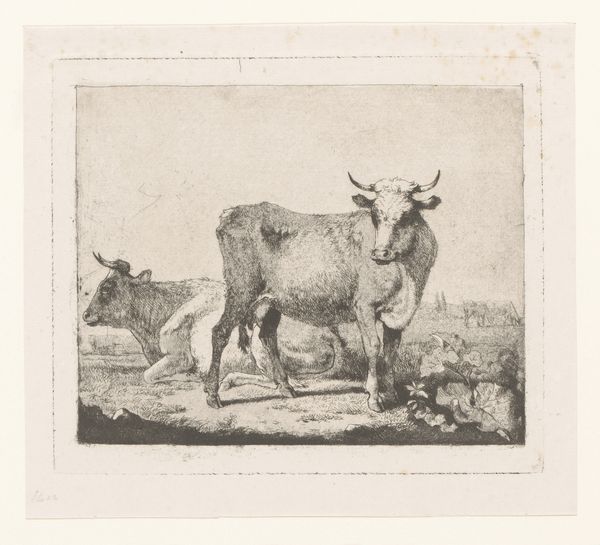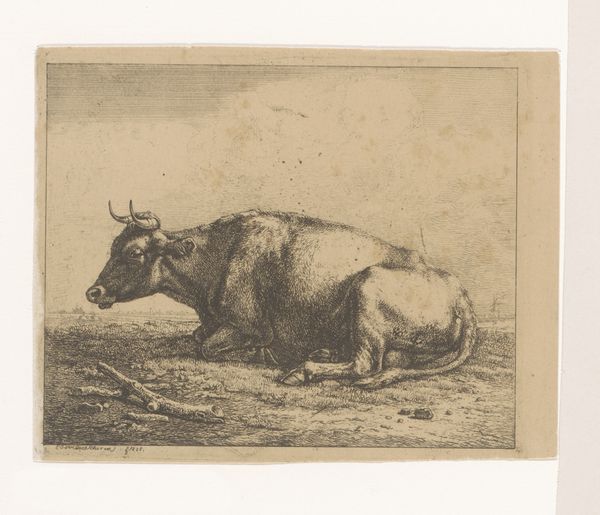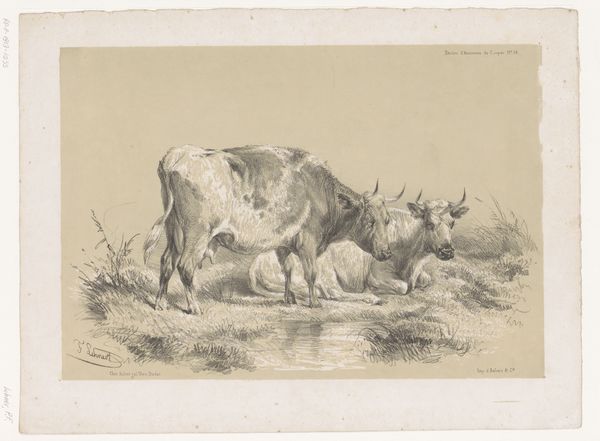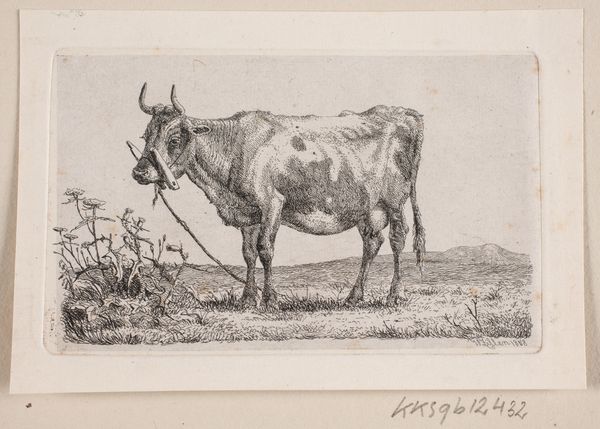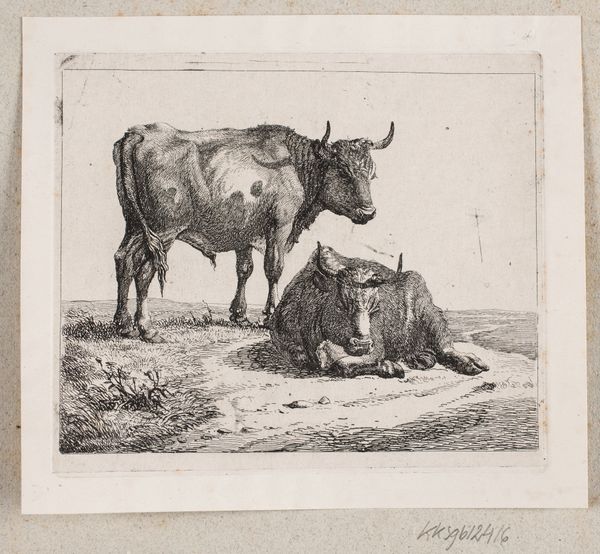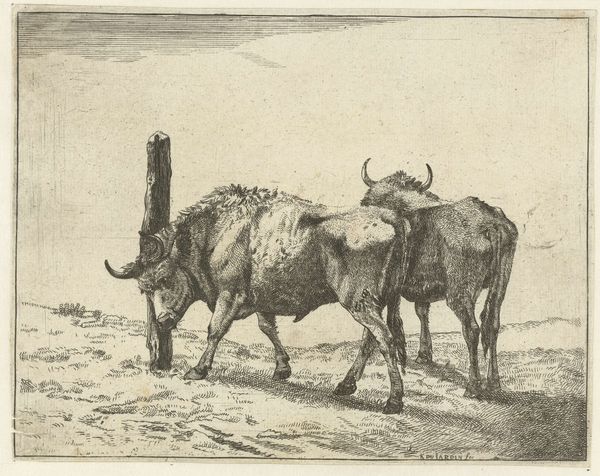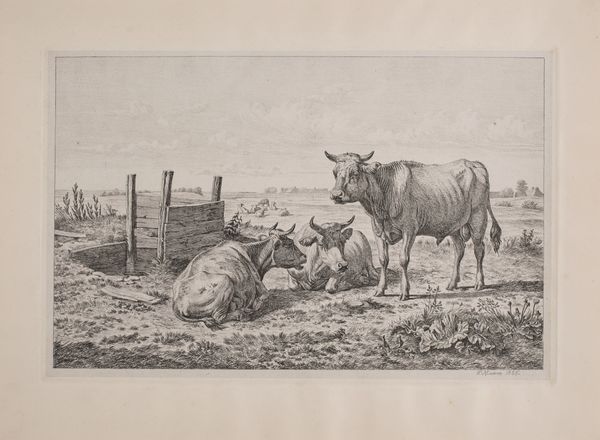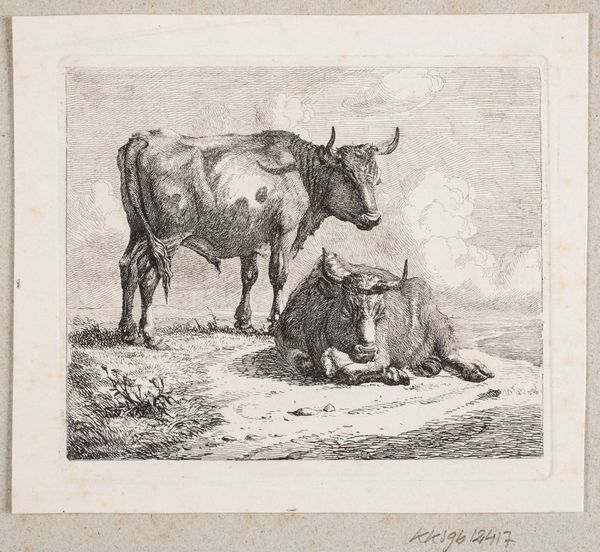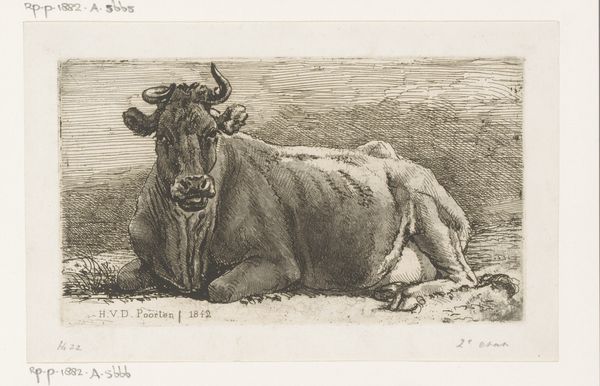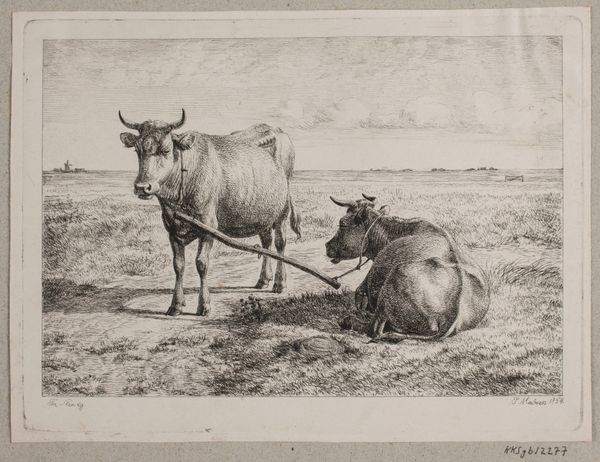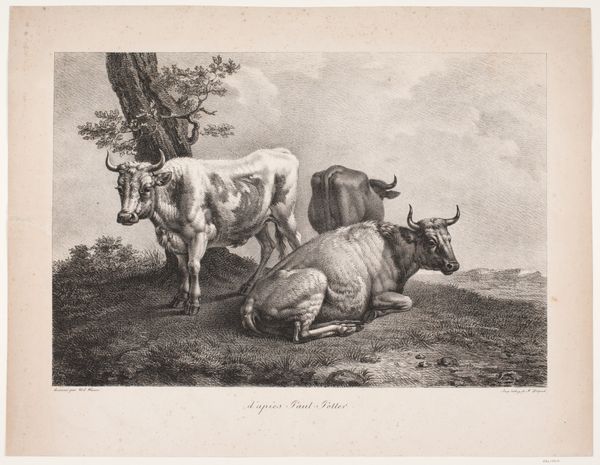
print, engraving
# print
#
landscape
#
engraving
#
realism
Dimensions: 139 mm (height) x 180 mm (width) (plademaal)
Curator: Johannes Wilhelm Zillen created this tranquil landscape titled "To hvilende køer," or "Two Resting Cows," back in 1858. It's an engraving, a print medium really suited to capturing the subtleties of light and shadow. Editor: It’s stark, isn't it? The lack of color really forces you to confront the composition. There’s a peaceful stillness but also something... heavy. Curator: Heavy in what way? I see a rustic idyll, a moment lifted from everyday pastoral life. The cows seem perfectly content. Editor: Maybe it’s the texture. Look at how the lines build up to create the cows’ forms, particularly the one in the foreground. You can practically feel the weight of the ink, the press of the plate. It makes me think about the labor that went into creating this seemingly simple image. Curator: Yes, it's an interesting contrast, isn’t it? The scene is relaxed, yet the medium, engraving, requires such precise and painstaking work. Each line meticulously etched. It's fascinating how an artist uses a laborious technique to depict something so effortless. Editor: Exactly! And consider the social context – cows as agricultural commodities, the artist's role in visually documenting this aspect of life. It’s a window into a particular moment of production. Were these cows raised for dairy, for meat, or perhaps to assist plowing the fields? Curator: I suppose the reality of 1858, especially rural Denmark, would be inextricably linked to that relationship, wouldn't it? Although it could be easy to get lost in its seeming quaintness. Editor: Quaintness can be deceiving. Looking at this print, I start to consider the relationship between rural labor and artistic production and the artist as also a laborer with specific means. Curator: A valid observation. What do you make of the contrast between the meticulously rendered foreground and the much sketchier background? Editor: To me, it highlights the focus on the cows as working animals, almost elevates them to icons of that specific rural reality while reducing the rest of the landscape to a mere setting. Curator: It invites a certain amount of reverence, perhaps. Zillen does achieve something rather striking. After all, cows weren't usually depicted as these central, almost monumental, subjects during that time. Editor: And considering all of that manual labor used in their creation... yes, it makes the image more captivating. The quiet scene gains unexpected depth and becomes a place to meditate.
Comments
No comments
Be the first to comment and join the conversation on the ultimate creative platform.
